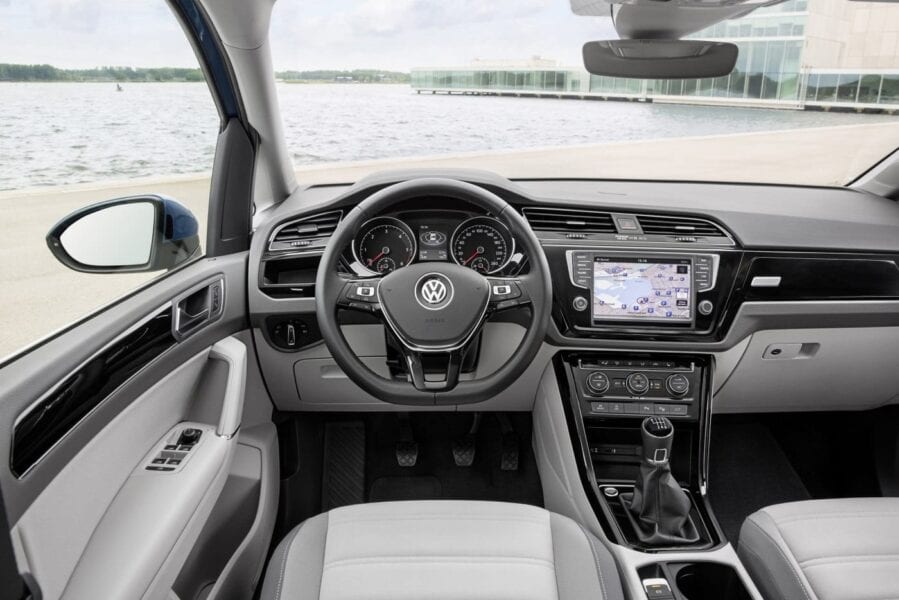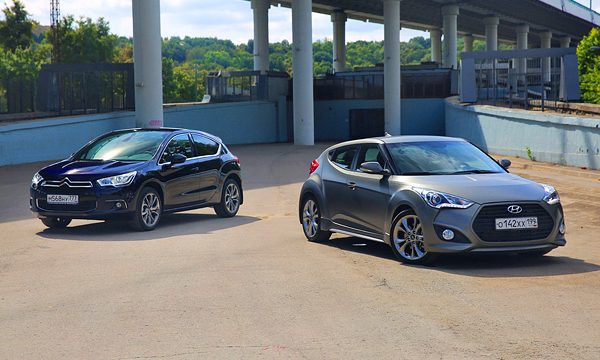
Test drive Hyundai Veloster vs DS4
One tries to cuddle closer to the ground, the other arched his back and stood on tiptoe, like a frightened cat. Hyundai Veloster and DS4, at first glance, are too different: one resembles a sports car, the other a crossover. But in reality they have a lot in common ...
One tries to cuddle closer to the ground, the other arched his back and stood on tiptoe, like a frightened cat. Hyundai Veloster and DS4, at first glance, are too different: one resembles a sports car, the other a crossover. But in fact, they have a lot in common and the models can be considered classmates. The measure of the segment in this case is unusual.
The Veloster and DS4 are a design riot. There is no other way to explain how such strange cars ended up on the assembly line. In fact, everything was much more prosaic: both Hyundai and Citroen needed a bright image car. Moreover, if the Koreans limited themselves to one youth model and a special font of the name, then the French automaker allocated a whole premium direction for stylistic experiments, named after the legendary “Fantomasomobile” DS-19. And now PSA marketers are even asking not to write Citroen and DS together.
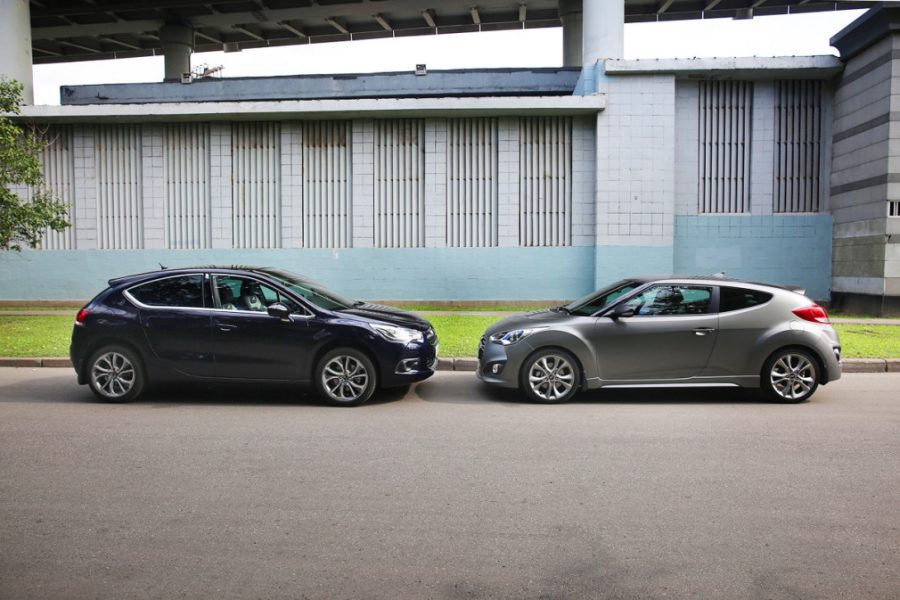
If it were not for the hint in the form of a Citroen chevron and oval nameplates for Hyundai, DS4 and Veloster, it would be difficult to reckon with any of the brands with a high degree of certainty. Despite the difference in size and silhouette, these cars are more similar to each other than to their congeners in the model line: a polygonal grille mouth, fog lights, bizarrely curved headlights, wide-contoured wheel arches, wheel pattern. Seen from the stern, the picture is completely different - not a single common motive in the design.
There are more generic features in the design of the front panel of the cars. Avant-garde appliances and minimalism combined with chrome trim give the DS4 a "Frenchman"; quirky lines and unpretentious silver plastic indicate the Veloster's Korean origins. But surprisingly, the pattern on the front panel of the Veloster repeats the DS's signature diamond pattern with minimal differences.

The DS4 in the 1955 anniversary edition comes with bi-xen headlights and 18-inch wheels. At the same time, you have to start the car in the old fashioned way, inserting the key into the ignition lock. The driver's seat is manually adjusted, but there is a lumbar massage function. The combination of a glove box with inner velvet upholstery and a mirror in sun visors without illumination is surprising. However, the absence of bulbs can be explained by the complex design of the visors: they are fixed on movable curtains that cover the upper part of the windshield that goes to the roof.
The Veloster Turbo is the top-of-the-line model. It starts with a button, but the model has only longitudinal seat adjustment electrified, and the climate control is single-zone. Despite the presence of multimedia systems with large screens, none of the test specimens has rear-view cameras, and parking sensors are triggered with a delay.
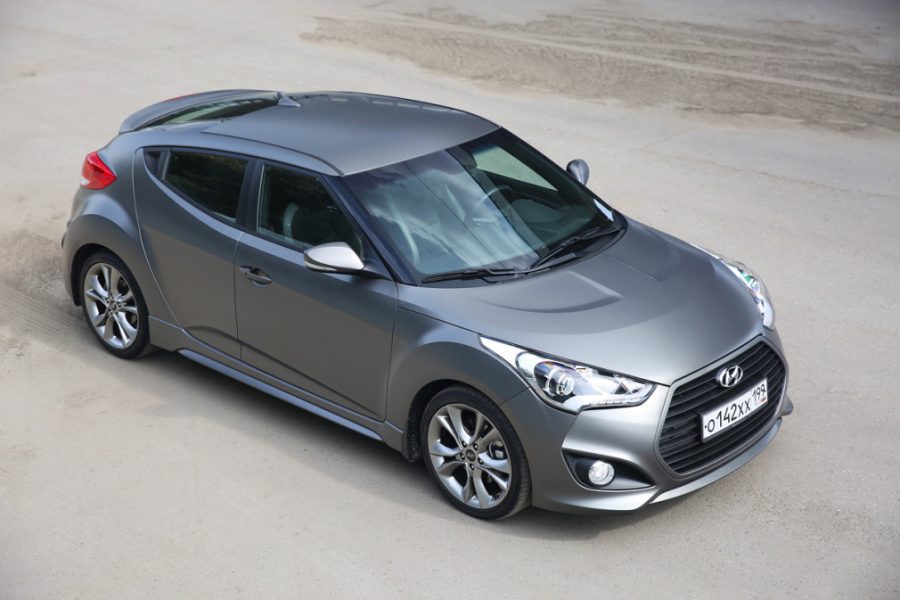
The body of the Veloster is asymmetrical: there is only one door on the driver's side, and two on the opposite side. Moreover, the back one is secret, with a handle hidden in the rack. The DS4 also hides the rear door handles from outsiders, but it is full of other optical illusions as well. For example, what I mistook for the LEDs in the headlights is a clever imitation, and the real LED lights are located below and skirted around the fog lights. The tailpipes in the rear bumper are fake, and the real ones have been removed from sight, apparently due to the fact that they are not spectacular enough.
To land on the second row of the "Frenchman" you will need dexterity: first we dodge the dangerously protruding corner of the door, then we crawl inside through a low and narrow opening. The door of the Veloster is also narrow, but it is equipped with a power window - the rear windows of the DS4 do not go down at all.
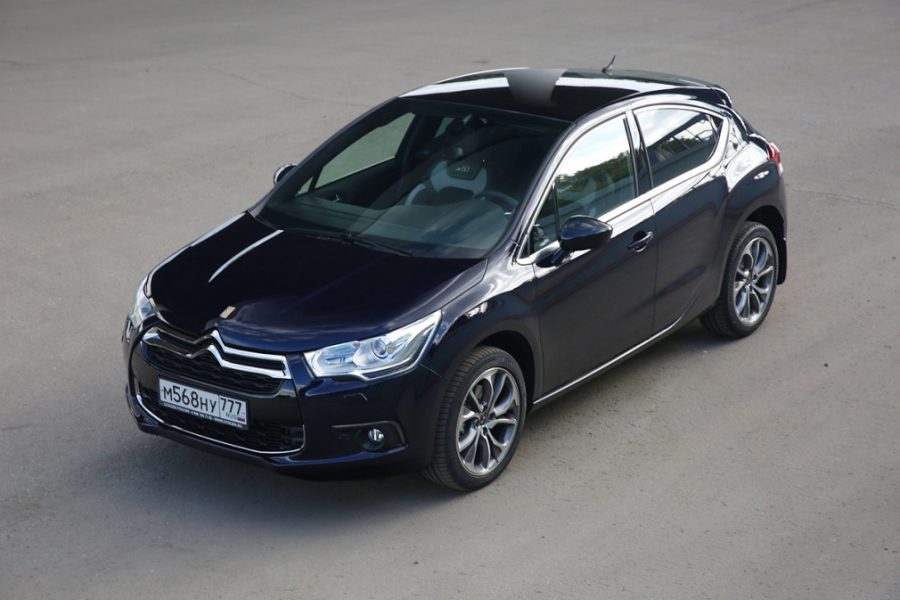
Due to the black upholstery and small windows, the rear of the cars seems to be cramped than it really is. In terms of space in the second row, Hyundai sits somewhere between a compact hatchback and a sports coupe. Due to the strongly inclined backrest and low pillow, a person shorter than 175 centimeters sits down by himself and he is quite comfortable there, even if the margin in front of the knees and above his head is not very large. A taller passenger runs the risk of resting his head against the edge of the roof, or even against the rear transparent section. DS4, which seems to be larger and more roomy, is also cramped: the rear sofa cushion is higher than in the Veloster, the backrest is closer to the vertical, and the roof begins to drop sharply just above the passengers' heads. The width of the cabin is about the same for cars, but the Hyundai sofa is molded only for two and there is a rigid insert with cup holders in the middle, while the second row of DS4 is designed for three seaters.
Models are equipped with 1,6-liter fours with direct injection, variable valve timing and twin-scroll turbochargers. The Veloster engine has a higher boost pressure - 1,2 bar versus 0,8 for the DS4. It is more powerful and high-torque - the difference is 36 hp. and 25 newton meters. At the same time, the difference in acceleration to “hundreds” does not exceed half a second, and it feels even less. Hyundai's pickup is more pronounced, but the gigantic exhaust pipes are far from the kind of music you'd expect. The voice of the DS4 also lacks aggression, besides, when the gas is released, the engine whistles angrily by the bypass valve, which bleeds excess air into the atmosphere.
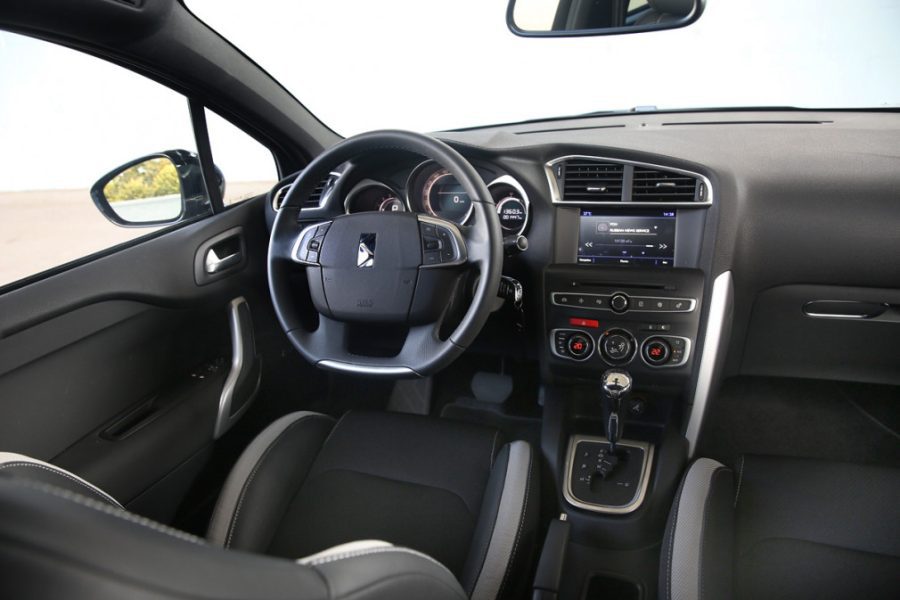
The Veloster is the only Hyundai model to be equipped with a robotic dual-clutch transmission. "Robot" requires getting used to: you need to keep in mind that the car starts after a pause and rolls back slightly on the rise. The box is constantly trying to climb as high as possible, and, for example, at a speed of 40 km / h, it already holds the fourth step. In Sport mode, everything is different: here the transmission stays in a lower gear longer, but it shifts more roughly.
Behind the large DS wheel, cut off along the chord, I always try to find the paddles on the steering wheel, but in vain: only the Veloster has them. The six-speed "automatic" DS4 works smoother than the "robot", and even the sport mode cannot beat the softness of its reactions. The automatic gearbox constantly adapts to the nature of the movement. Having got into a congestion with a running start, it keeps high revs for quite a long time, but now the traffic jam is over and you need to accelerate, and the “automatic” is used to moving at a low speed and is in no hurry to switch down gear. Winter DS4 transmission mode can be switched on to save fuel: the car starts off in third and always goes in higher gears.
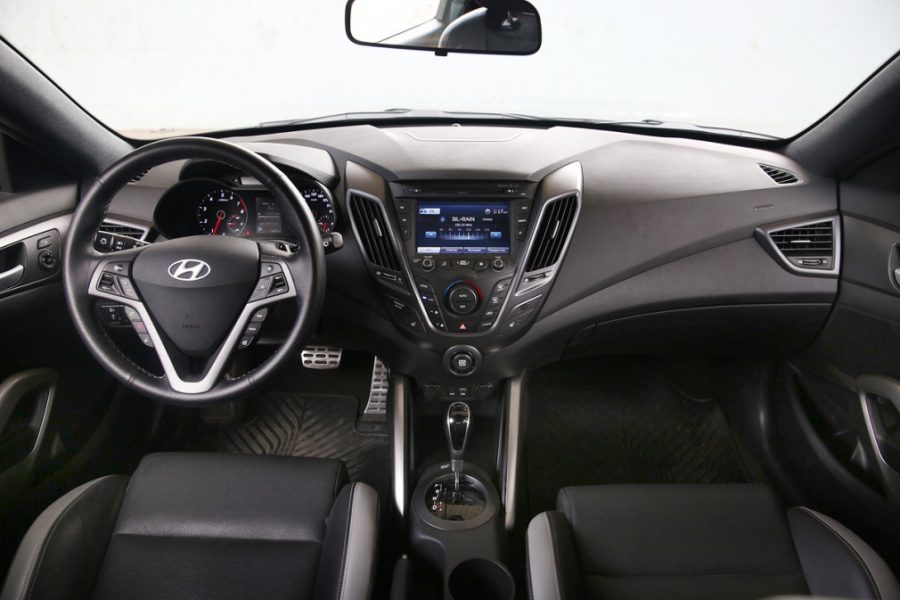
The suspensions of the cars are simple: McPherson in front, a semi-independent beam in the back. The Veloster, as befits a sports hatchback on R18 wheels, reacts harshly to bumps. Surprisingly, the DS4, which has longer springs and a slightly higher tire profile, was not softer. He meets sharp irregularities unexpectedly hard and noisy. At the same time, the car jumps off the trajectory, and the steering wheel tries to escape from the hands. Moreover, if on Hyundai the rear suspension withstands a blow worse than the front, then on DS4 both axles suffer from large irregularities.
The Veloster's steering wheel is sharper, but you can play with effort - tuck in or relax a little. The power steering DS4 has smoother wheel feedback and smoother wheel response. The Veloster slides with four wheels to the limit, and with the ESP completely disabled in a corner, it is easy to break into a slip and the rear axle. The stabilization system of the "Frenchman" was switched off after 40 km / h again: boring, but extremely safe. The diameter of the brake discs is about the same, but Hyundai slows down more predictably, while the DS4 responds sharply to the brake pedal, which contradicts its calm nature.
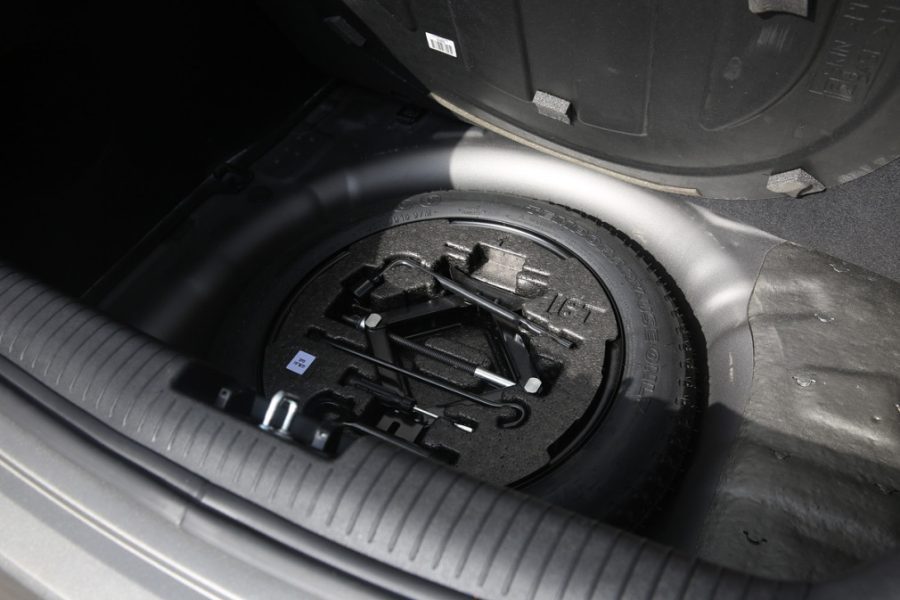
In general, the habits of cars do not have the same wow effect as their appearance. The Veloster is slightly louder and harsher, which will appeal to ambitious drivers. This is a kind of exhibition of Hyundai's achievements: "robot", turbo engine and quirky design. DS4 with high ground clearance is better suited for Russian conditions and captivates, above all, with its smoothness and quiet interior. But for the brainchild of Citroen, it is still not avant-garde and technically sophisticated enough.
These two cars are remarkably similar to each other. They were created as a fashion accessory that emphasizes the individuality of the wearer. Of course, on the track they will look like a haute couture suit on a treadmill, but for the city, the power and handling is enough.
